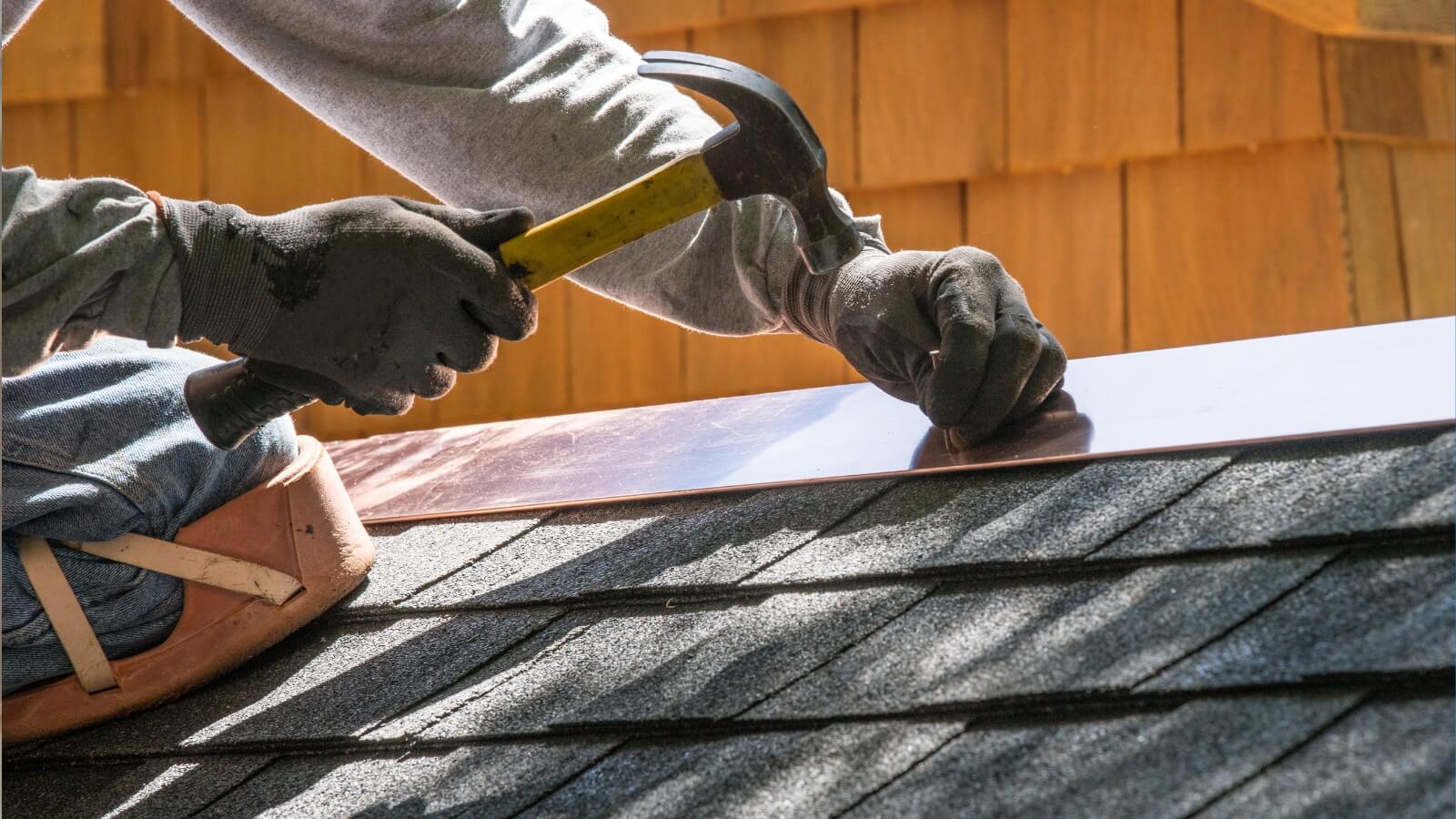If you’re a homeowner dealing with the harsh Wisconsin winters, you’ve likely experienced or witnessed an ice dam. An ice dam is a ridge of ice that is formed when snow melts and then refreezes, creating a rigid layer that sits along your gutters and roofline. As more moisture pools there, the ice dam grows and spreads along your house.
If left untreated, ice dams can not only damage your gutters and roof, but they can also cause water to leak into your home, causing mold, mildew, and even rot that threatens the overall structural integrity.
On top of all the architectural havoc they wreak on your home, they also create a risk for personal injury, as large icicles can form and threaten to fall on you and your family. Luckily, ice dam prevention is possible with a few preventative measures, leaving you free to relax and enjoy a cozy winter.
How to Prevent Roof Ice Dams
Clean the Gutters

Clogged gutters are the perfect environment for ice dams to grow and spread. In the fall, your gutters and drainpipes fill with leaves, debris, and twigs, effectively blocking water and ice melt from being funneled away from your home. Then, as the cold weather sets in, the moisture that is trapped and pooling there freezes, filling your gutters with ice. More and more ice will continue to gather along your roofline as water collects there, eventually creating an ice dam. Taking the time to thoroughly clean your gutters is the easiest way to prevent this from happening—especially before a large snowfall.
Rake the Roof

Although a fresh, white layer of snow on your roof may look picturesque, it can quickly turn into a problematic ice dam when it melts and refreezes along your roof. To prevent this, use a roof rake (not a garden rake) to pull the piles of snow off of your roof. Roof rakes have long, extendable handles and wide shovel heads to make it easy to remove snow from all corners of your house. Be gentle while doing this to avoid scratching or knocking off any shingles or roofing materials, and make sure to focus on the base of your roof or overhangs.
Update Your Insulation

Poor insulation, especially in your attic, allows precious heat to escape and melt the snow on your roof, creating moisture that runs to the edge of your roof and allows ice dams to form. Most building codes require less insulation than is necessary to prevent ice dams, so it’s likely your home is already ill-prepared. Consider having an insulation expert come to inspect your attic for gaps, leaks, and other areas that need attention. They can even use infrared cameras to do thermal imaging on your roof to try and detect large temperature variations.
Repair Flashing

Flashing is thin, flat pieces of material (typically galvanized steel, copper, or aluminum) that are installed around the base of chimneys, vents, and skylights where they meet the roof. When properly installed, roof flashing helps regulate the temperature on the roof, avoiding snow and ice build-up. However, flashing can become lifted, warped, or corroded over time, and should be checked on occasion to see if it’s in need of repair or replacement. Otherwise, damaged flashing can create excess moisture that creates an ice dam.
How to Tell if You Have an Ice Dam

Luckily, ice dams tend to be easy to spot. If you do find one forming on your roof, don’t try and remove it yourself—contact a professional to avoid damage to your roof or personal injury. However, here are some telltale signs to look out for:
- Large icicles: One of the easiest ways to spot ice dams is the appearance of large icicles hanging from the edge of the roof or gutters.
- Icicles behind the gutter: Although icicles in front of the gutters are more common, icicles hanging behind are a sign of an ice dam forming.
- Sagging gutters: Gutters are designed to only hold so much weight—ice dams will weigh them down, causing them to sag away from the house.
- Water leaks: Water staining or damp spots on the interior walls or ceiling of your home is indicative of ice dams causing a moisture backup that leaks inside.
- Patchy roof: If the snow on your roof is patchy and not uniform, this could mean poor insulation, which means an ice dam is likely forming somewhere or will soon.
Your Ice Dam Removal Experts
Do you have a troublesome ice dam you’d like removed? Contact us today for a free consultation or to speak to one of our representatives! At Standard Roofing & Restoration, we offer premier ice dam removal services. We understand the importance of carefully removing these dams in order to extend your roof’s lifespan and keep you and your family safe all winter long.
